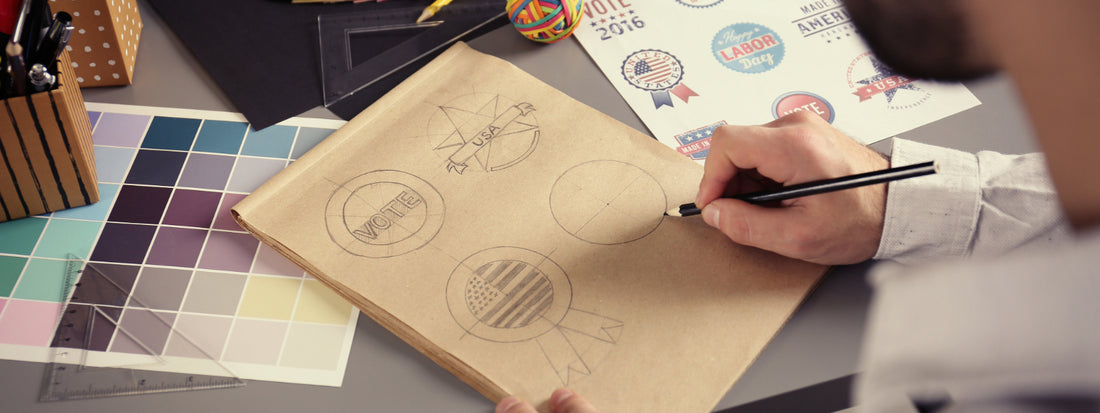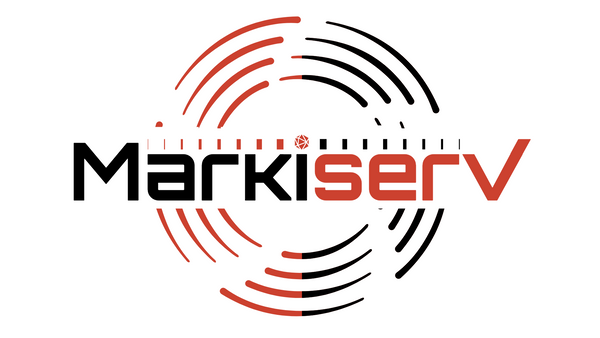
The Most Iconic Logo Designs in History and Lessons for the Future
Share
Logos are not just images; they are powerful symbols that encapsulate a brand's essence, values, and vision. Over the years, some logos have risen above the rest, becoming timeless representations of culture, innovation, and identity. From the simplicity of Nike's swoosh to the storytelling of Starbucks' siren, this post explores the most iconic logos in history, why they were impactful, and the lessons they offer for modern businesses striving to leave their mark.
Nike: The Swoosh That Speaks Volumes
Nike’s swoosh logo, created by graphic design student Carolyn Davidson in 1971, is a masterclass in simplicity and meaning. Inspired by the wings of the Greek goddess Nike, the logo symbolizes speed, motion, and victory.
Nike’s swoosh stands as a visual metaphor for aspiration and drive. The minimalist design is instantly recognizable and speaks to the brand's ethos—empowering athletes and active individuals to push their limits. Over the years, the simplicity of the swoosh has ensured its timeless appeal, making it a symbol that resonates globally, transcending language, culture, and time.
Nike’s logo is a great example of how less can be more. It proves that a symbol, when designed thoughtfully, can convey a powerful message without being overly complex. The logo’s simplicity has allowed it to remain relevant, even as trends have evolved in design.
Lesson for the Future
Keep your logo simple yet meaningful. Universally resonant symbols have greater longevity and broader appeal. A minimalist approach ensures your brand remains adaptable across different platforms and media, ensuring your logo doesn’t age or become irrelevant.
Apple: A Bite of Innovation
Apple's logo, designed by Rob Janoff in 1977, is another stellar example of simplicity paired with meaning. The bitten apple represents knowledge and discovery while exuding elegance and modernity. Over the years, the logo’s design has evolved, but its core concept remains untouched.
The bitten apple is not just a clever visual metaphor; it tells the story of Apple’s journey from an upstart computer company to a global icon of innovation. The apple is universally associated with learning, but by adding the bite, it communicates a sense of accessibility—Apple wants its products to be approachable for everyone.
The sleek, clean design of Apple’s logo aligns with its philosophy of minimalism. As Apple expanded into new markets and product categories, from iPhones to wearables, the logo’s minimalist approach has allowed it to stand out on every screen, no matter how small. The logo adapts seamlessly to any medium, whether on a mobile screen, in print, or in television commercials.
Lesson for the Future
Consistency in branding is crucial. A logo that aligns with your brand’s values and identity helps create a lasting emotional connection with consumers. This connection is what makes the logo timeless, which is especially important as brands continue to expand and diversify their products.
Coca-Cola: Timeless Script
Coca-Cola’s logo is a testament to the power of tradition. Designed in 1886 using the Spencerian script, it evokes nostalgia, heritage, and familiarity. Despite minor tweaks over the decades, the core design remains intact, preserving the brand's identity.
This consistency has allowed Coca-Cola to remain relevant for over a century. The logo’s association with shared moments of joy and refreshment has made it an enduring cultural symbol. Its handwritten script adds a personal touch, suggesting the human connection that the brand fosters, from enjoying a Coke at a picnic to sharing a bottle at a sporting event.
The distinct red and white color scheme further strengthens Coca-Cola’s branding. Red is known to evoke excitement and energy, while white represents purity and simplicity. Together, they create a sense of happiness and togetherness, which has been central to Coca-Cola’s brand messaging.
Lesson for the Future
A timeless design can provide stability and continuity for your brand. Avoid chasing fleeting trends, and instead focus on creating a logo that can endure for generations. The power of consistency cannot be understated, as Coca-Cola’s brand has proven time and time again.
McDonald’s: The Golden Arches of Familiarity
The golden arches of McDonald’s are instantly recognizable, embodying accessibility and comfort. Originally part of the restaurant’s architecture, the arches evolved into the standalone logo we know today.
The logo’s design is rooted in the concept of familiarity. The golden arches create a sense of warmth and stability. The use of yellow and red in the design is also highly intentional. Red stimulates appetite, while yellow evokes warmth and happiness, making it an ideal combination for a fast-food giant.
The golden arches are not just a symbol of a fast-food chain but a sign of a global cultural phenomenon. McDonald's has used its logo to create a sense of universal recognition, ensuring that customers across the world feel they are familiar with the brand, no matter where they are. This is especially powerful in a globalized world where consistency is key for success.
Lesson for the Future
Color psychology plays a significant role in logo design. Choose colors that align with your brand’s messaging and values to create a stronger connection with your audience. Logos should speak to the emotions you want your customers to feel when they interact with your brand.
FedEx: The Subtle Genius
FedEx’s logo, designed by Lindon Leader in 1994, is renowned for its clever use of negative space. The hidden arrow between the “E” and “X” symbolizes speed, precision, and reliability—qualities that align perfectly with the brand’s mission.
This subtle yet impactful design element sets the FedEx logo apart, showcasing the power of thoughtful, detail-oriented design. The arrow is not immediately obvious, which encourages the viewer to take a second look, revealing a hidden layer of meaning that elevates the entire design. The logo works both as a functional representation of the brand and as an intellectual engagement for the viewer.
The FedEx logo is also incredibly versatile. It works in all sizes, from tiny website icons to large billboards, ensuring that the brand’s message of reliability and speed is communicated consistently and clearly across platforms.
Lesson for the Future
Incorporate subtle elements that reinforce your brand’s values. Clever details can make your logo more memorable and meaningful. A logo doesn’t always need to shout its message; sometimes, it’s the hidden aspects that make a design stand out and leave a lasting impression.
Google: Playful and Adaptive
Google’s logo, designed by Ruth Kedar, reflects the brand’s playful and innovative spirit. The use of primary colors, with a rebellious touch of green for the “l,” communicates Google’s approach to breaking conventions.
What’s unique about Google’s logo is how it adapts. The Google Doodles, which temporarily replace the logo to celebrate events and milestones, keep the brand dynamic and culturally relevant. Google’s adaptability is a key aspect of its branding strategy, ensuring it resonates with different audiences in different contexts.
The logo's simplicity and flexibility allow it to stay relevant as the company expands into new product categories, from search engines to artificial intelligence. The brand's willingness to evolve the logo while retaining its core identity has been key to its success.
Lesson for the Future
Adaptability is key. A logo should be versatile enough to evolve with your brand while maintaining its core identity. A successful logo can seamlessly transition across multiple platforms and product lines while maintaining clarity and recognizability.
Starbucks: The Allure of the Siren
Starbucks’ siren logo, inspired by a 16th-century Norse woodcut, tells the story of the brand’s roots and the seductive appeal of coffee. The design has been refined over time, with the most recent version focusing solely on the siren, removing text altogether.
The decision to remove the text was a bold one, but it illustrates Starbucks' confidence in its global recognition. The siren’s captivating gaze evokes mystery and allure, tying into the emotional connection the brand wants to build with its customers. The logo conveys not just a beverage but an experience—one of indulgence, comfort, and ritual.
Starbucks’ siren logo also exemplifies how evolving your brand’s identity can reflect its growth. The logo has shifted from a detailed graphic to a more minimalist design, mirroring the brand’s increased maturity and international expansion.
Lesson for the Future
A logo that tells a compelling story can create a deeper emotional connection with your audience. Make your logo a reflection of your brand’s history, values, and aspirations. A logo should speak to the emotions you want your customers to feel when they interact with your brand.
Helpful Links to Learn More:
-
The History of Logos - This article provides an in-depth look at the evolution of logos, highlighting key designs and their impact.
-
10 Principles of Good Logo Design - Canva's guide on what makes a logo effective, offering practical tips for designers.
-
The Psychology of Color in Logo Design - Learn how color influences perception and how to choose the right palette for your logo.
-
Logo Design Trends 2023 - An Entrepreneur article discussing the latest trends in logo design, which can be insightful for staying current.
-
How to Create a Logo: A Beginner’s Guide to Designing a Logo - HubSpot's comprehensive guide for beginners on logo creation, covering tools, processes, and tips.
